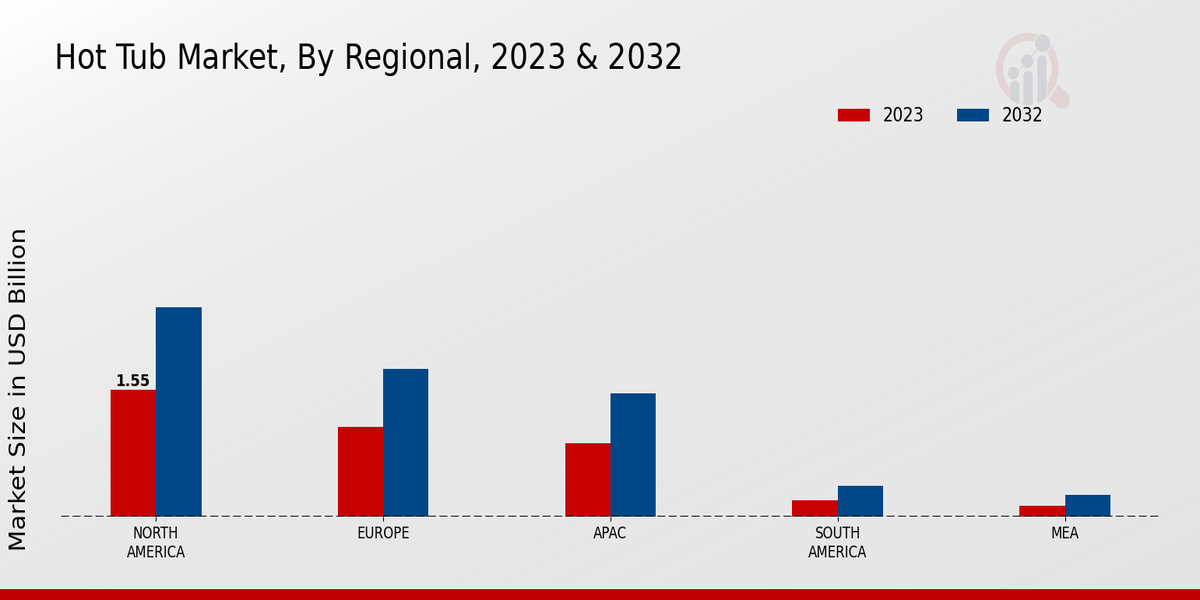Rising Disposable Income
An upward trend in disposable income across various demographics is contributing to the expansion of the Global Hot Tub Market Industry. As consumers gain more financial flexibility, they are inclined to invest in luxury items, including hot tubs. This trend is particularly evident in emerging markets, where rising middle-class populations are increasingly purchasing hot tubs for home use. The anticipated growth from 4.37 USD Billion in 2024 to 8.18 USD Billion by 2035 underscores the potential for increased sales driven by higher disposable incomes. This economic shift indicates a promising future for the Global Hot Tub Market Industry as more households embrace luxury wellness products.
Market Growth Projections
The Global Hot Tub Market Industry is poised for substantial growth, with projections indicating a rise from 4.37 USD Billion in 2024 to 8.18 USD Billion by 2035. This growth trajectory suggests a compound annual growth rate of 5.86% from 2025 to 2035, reflecting increasing consumer demand and market expansion. Factors such as rising disposable incomes, technological advancements, and a growing interest in wellness are likely to contribute to this upward trend. The market's potential for growth indicates a vibrant future for the Global Hot Tub Market Industry, as it adapts to evolving consumer preferences and market dynamics.
Expansion of Outdoor Living Spaces
The trend towards enhancing outdoor living spaces is driving growth in the Global Hot Tub Market Industry. Homeowners are increasingly investing in their backyards, creating environments that promote relaxation and entertainment. Hot tubs are becoming integral components of these outdoor retreats, appealing to consumers looking to enhance their lifestyle. This shift is reflected in the projected compound annual growth rate of 5.86% from 2025 to 2035, indicating a sustained interest in outdoor leisure products. As more individuals seek to create personal sanctuaries at home, the demand for hot tubs is likely to rise, further solidifying their role in the Global Hot Tub Market Industry.
Increasing Consumer Interest in Wellness
The Global Hot Tub Market Industry experiences a notable surge in consumer interest towards wellness and relaxation. As individuals increasingly prioritize mental and physical well-being, hot tubs are perceived as essential tools for stress relief and therapeutic benefits. This trend is reflected in the projected market value of 4.37 USD Billion in 2024, indicating a robust demand for hot tubs as wellness products. Furthermore, the growing awareness of the health benefits associated with hydrotherapy is likely to drive sales. Consumers are seeking products that enhance their quality of life, suggesting a sustained growth trajectory for the Global Hot Tub Market Industry.
Growing Popularity of Eco-Friendly Products
The Global Hot Tub Market Industry is witnessing a growing preference for eco-friendly products among consumers. As environmental awareness increases, buyers are seeking hot tubs that utilize sustainable materials and energy-efficient technologies. Manufacturers are responding by developing eco-conscious models that minimize environmental impact while maintaining performance. This trend aligns with the broader movement towards sustainability in consumer goods, potentially attracting a new segment of environmentally aware consumers. The emphasis on eco-friendly options may enhance brand loyalty and drive sales, suggesting a promising outlook for the Global Hot Tub Market Industry as it adapts to changing consumer values.
Technological Advancements in Hot Tub Design
The Global Hot Tub Market Industry is significantly influenced by ongoing technological advancements in hot tub design and functionality. Innovations such as energy-efficient heating systems, smart controls, and enhanced water purification technologies are attracting consumers seeking modern and convenient solutions. These advancements not only improve user experience but also contribute to sustainability, appealing to environmentally conscious buyers. As the market evolves, manufacturers are likely to invest in research and development to introduce cutting-edge features. This focus on innovation may lead to increased market penetration and a broader consumer base, thereby supporting the growth of the Global Hot Tub Market Industry.













